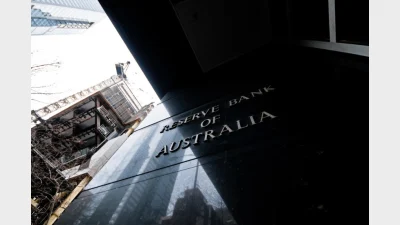RBA holds off on committing to further rate cuts



The RBA has signalled a cautious approach to further rate decisions, noting that it does not commit to additional reductions in the cash rate target at future meetings.
The Reserve Bank said that its first rate cut in four years does not guarantee further reductions, with future decisions to be guided by economic data and evolving risks.
In the minutes of its February meeting, the RBA acknowledged that progress had been made in taming inflation, but left the door open for rates to stay higher for longer if inflation proves more persistent than expected.
“Members agreed that their decision at this meeting did not commit them to further reductions in the cash rate target at subsequent meetings,” the minutes said.
“While economic outcomes had given members more confidence that they could return inflation to target at the same time as preserving most of the gains in the labour market with a lower cash rate, they agreed that this was not yet assured. As a result, members expressed caution about the prospect of further policy easing, which could also be seen in the forecast for inflation based on the market path.”
Moreover, the RBA said that Australia’s interest rates didn’t rise as high as in other countries and that the labour market remains stronger, making its rate-cut approach distinct.
“They [the board] noted that interest rates in Australia had not risen as high as elsewhere and that the labour market domestically was in a much stronger position than had been the case in other economies when their central banks first lowered interest rates,” the central bank said.
In weighing up a rate cut in February, the minutes revealed a complex discussion between holding steady and easing policy.
The strongest argument for holding rates was the resilience of the labour market, with the bank saying that there is a possibility that conditions in the labour market could prove “even stronger” than assumed in the staff’s forecasts.
“Members noted that, while there was significant uncertainty about the extent of excess demand in the economy, the staff’s judgement was that the tightness in the labour market was not consistent with inflation being at the target,” the minutes said.
Another reason to hold was the prospect of stronger growth, driven by rising incomes and global momentum, with the RBA saying the output gap would likely remain positive if rates followed market expectations.
The RBA also considered the risk that a rate cut could leave monetary policy insufficiently restrictive, given mixed economic signals and Australia’s lower peak rates compared with other economies.
On the flip side, the minutes cited the signal from recent trends in inflation and wages as the “strongest reason” to lower the cash rate.
Weaker-than-expected inflation in the December quarter and softer-than-expected wages growth were taken to imply that there could possibly be more capacity in the labour market than members had previously judged. Moreover, the RBA also cited downside risks to growth with both domestic and global events playing a role in the propensity of firms and households to spend.
“Having weighed up these alternative arguments, members decided that the case to lower the cash rate target at this meeting was, on balance, the stronger one,” the RBA said.
“Members judged that the continued fall in underlying inflation, and at a somewhat faster pace than expected, meant that the upside risks to inflation had abated enough that they no longer needed the insurance they had taken out when raising the cash rate target in November 2023.”
Looking forward, the RBA said: “Future decisions would be guided by the incoming data and evolving assessment of risks.
“Returning inflation to target remains the board’s highest priority and it will do what is necessary to achieve that outcome.”
The RBA delivered its first rate cut in over four years last month, reducing the rate from 4.35 per cent to 4.10 per cent.
The consensus among economists and fund managers seems to be two more cuts this year, though some are so dovish they’re predicting a total of four cuts in 2025 – including the Commonwealth Bank, which is known for reading Michele Bullock’s words through a more generous lens.
Following the RBA’s rate cut in February, speculation ran high, with some saying it was driven by politics rather than economic data.
In his interpretation of Bullock’s message, AMP’s Shane Oliver told Super Review that despite Bullock’s comments to the contrary, politics likely played a role in the decision.
By cutting rates in February, the RBA has essentially dodged the political controversy of lowering rates in an election campaign or just before one, he said.
Moreover, he said: “It will avoid perceptions that the government stacked the new interest rate setting board, that will take over from the next meeting, to drive an April cut and so minimise the RBA being politicised.”
Recommended for you
Superannuation industry bodies have warned the prudential regulator that some of the more rigid proposals in its Governa...
IFM has firmly opposed any push for publicly disclosing current valuations of private market assets, saying it would “damage the financial interests of investors” and reduce appetite for infrastructure and private business investment.
Subdued GDP figures have bolstered expectations that the RBA could cut rates sooner and, possibly more aggressively, market watchers say.
Australian institutional investors plan to keep their finger on the pulse of private markets, new data has shown, with local investors aiming to further expand allocations into the sector.









